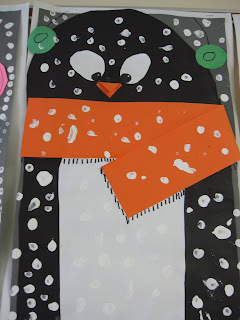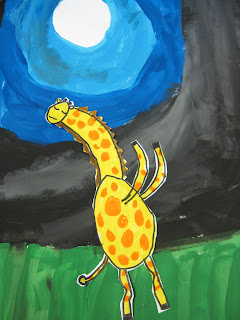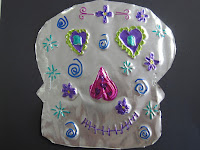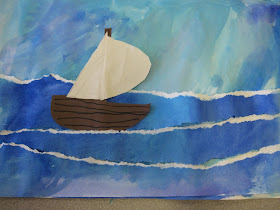Molas are made by the
Kuna people who live in Panama
and Colombia.
Women sew many layers of fabric together and then cut away layers of fabric in
a design to show the fabric underneath. Then the women wear these fabric
designs on their dresses. When they are tired of wearing that particular
design, they cut off the mola and sell it. It takes the women from two weeks,
to six months to make one mola.
Fourth Grade students
designed their own molas, but created them in the opposite way of the Kuna
women. Usually, the artist must cut away layers of fabric to show the fabric
underneath. Instead of doing this, students glued layers of paper together,
showing just a little bit of the color underneath.



















































